
|
|
|
Search our site
Check these out    Do you have an entertaining or useful blog or personal website? If you'd like to see it listed here, send the URL to leon@pawneerock.org. AnnouncementsGive us your Pawnee Rock news, and we'll spread the word. |
Too Long in the WindWarning: The following contains opinions and ideas. Some memories may be accurate. -- Leon Unruh. Send comments to Leon July 2010Follow the money[July 30] Fans of politics might be interested in seeing how much Pawnee Rock's residents contributed to the Senate, House, and state primary races. The Great Bend Tribune published links to the federal and state elections commissions reports filed by the candidates. (Story here.) The reports identify the donor, his or her job, home city, and the amount given. Open Jerry Moran's report, for example, and you'll get a very, very long listing. What I did was tell the file to show all the listings, then I clicked on the "city" column link, and it ordered the donors by city. Then it was easy to find everyone claiming Pawnee Rock as an address. You can do the same for Larned and Great Bend just to see who you know with Pawnee Rock ties. Dust Bowl stories[July 30] Joan Smith wrote to recommend a book -- "The Worst Hard Time" by Timothy Egan. "It's the untold story of those who survived the Great American Dust Bowl. Having grown up in California, I really didn't know much about those years. Virgil says he remembers many hard times. It has a section about our ancestors who came to the U. S. from Russia with their hard red winter wheat. I'm finding it fascinating." Thanks, Joan. I don't know Egan, but I know his writing from the New York Times. I think he's a good writer, and this sounds like a book I'm going to add to my library. Hello, Brad Schmidt[July 29] Brad Schmidt, who grew up in Pawnee Rock and now is a regional sales manager for a door company in Missouri, sent some thoughts about Elgie Unruh and Jimmy Clawson. Brad once lived on our block, in the big house at the intersection of Rock and Bismark. Here's what Brad wrote: Hello Leon, I have been logging on to your web site for 2 or 3 years now and have very much enjoyed revisiting the history and memories of my youth. Thanks for creating this window into the soul and makeup of our home town. You may remember me -- I lived behind the Tutaks across the alley. I certainly remember you and Cheryl and very vividly -- I remember your Dad. Elgie was a great guy who knew how to build anything. He built our cabinets in our house and I'm sure that he appreciated all the help that I provided. One of the most memorable encounters I had with your Dad was when he caught Kris Myers and me climbing in your bushes or cane plants on the back edge of your yard. We were scolded a bit but I always thought that your Dad gave me a pass because I was my Grandfather's grandson. Dan (Tex) Schmidt was, in my opinion, the best man who ever lived and I know that Grandpa and Elgie were good friends. I was inspired to write when I read the blog about Jimmy Clawson. Jim gave me my first real job when I was about 12 years old. I mowed his yard and washed, vacuumed, and waxed his fleet of classic cars -- if you can call that work. After I proved that I was a competent responsible employee, Jim let me help him in the shop. I cleaned engine parts, swept the floors, helped with some reassembling of jobs and eventually gained enough knowledge from Jim and AB to rebuild the engine in my 64 Impala SS. On many occasions, when my work was done, Jim would let me drive the "Happy Hooker" around town after I cleaned it up following a night at the Great Bend Races. I'm not sure how big of a deal that really was but I can assure you I was on top of the world as I punched the gas, cleaned out the pipes and hoped that my friends would see me. Jim also let me come into the pits on race nights and act as if I was a contributor. Later on as I grew up, you could find me and my friends in the stands watching Jimmy eat up the competition. My memories of Jimmy Clawson were all good and he was a big part of my growing up. He had a no nonsense approach but knew how to live life. Thanks for providing the catalyst to those memories. Brad Schmidt Bookworm[July 28] I had grand plans for PawneeRock.org this week. Barbara Schmidt sent superb early day photos of her family's farm, along with reflections on them, and I had planned to play it up big. I'll do that as soon as possible. Instead of properly spending my time on the history of our hometown, I've been selfish. I speed-read Child 44, a good thriller set in Russia's Stalin era. I've been editing books at home after editing books at work, and I've also been helping prepare a really nice selection of essays by my sister, Cheryl Unruh. I sent her files off to the printer in Newton last night, and then I sent the last chapters of another book (about the joys of bond trading) back down its production ladder. I'm edited out. Cheryl's book, Flyover People, named after her column and website and Kansans in general, contains several essays about growing up in Pawnee Rock. There are nice photos by her husband, Dave Leiker, and one of my all-time favorites (by our mom). It should be printed within two or three weeks. I'm sure you'll read more about it when the book is available, not that I would shamelessly promote her book even though it will make a great Christmas present. Don't cross the river: Readers will remember that Barton County closed the Radium Bridge over the Arkansas River recently and were worried about the Ellinwood Bridge. Now it turns out that the U.S. 281 bridge in Great Bend needs its own repairs. (Story) Parade, lunch, and flea market reminder[July 27] Those who don't already have August 7 marked in red on their calendars should keep the day open. The Pawnee Rock Lions Club is putting together a parade for that Saturday morning. After the parade, there will be a lunch and flea market at the depot. The parade begins at 10 a.m. The rest of the festivities run from 11 a.m. to 1 p.m. Rose Mary Babcock Niehaus Oberkrom dies[July 26] Marsha Bouker reports the recent death of Rose Mary Oberkom, who you may remember as Rose Mary Bobcock of Pawnee Rock. She graduated from Pawnee Rock High in 1947 and went on to a busy career of education in northwestern Kansas -- and then got a degree in cosmetology at age 61. Here are a few lines from her obituary in the Hays Daily News. "Rose Mary (Babcock) Niehaus Oberkrom of rural Graham County went to be with the Lord July 20, 2010, at the age of 80. She was born January 23, 1930, at Tetterville, Kansas, to Edward Paul and Lula May (Fomby) Babcock. "She became a Christian at age 9 in the Church of the Nazarene, Parsons, Kansas. She graduated in the class of 1947 from Pawnee Rock High School, Pawnee Rock, Kansas. She obtained her Bachelor's and Master's degrees in Education from Fort Hays State University. She taught in elementary schools for more than 39 years in Barton, Graham, Trego, Dickinson and Butler counties. She retired from teaching at Hill City Elementary School in May 1991. She graduated from Goodland Vo-Tech School of Cosmetology in November 1991." (Full obituary) Butch Morris going to reunion[July 26] Butch Morris sent this note 10 days ago and I misplaced it despite my intention to pass it along to everyone. He's excited about the school reunion/golf event, scheduled for August 21 in Great Bend. Here's his note: Hey Leon, I attended my 1st alumni PR gathering last year and was so thrilled that I made sure I was going to attend this year. Still live near KC and bought me a new bike this year and gonna ride down on it. Have booked the Best Western so I won't have to leave until I'm ready. Looking forward to seeing everyone. Butch King of the Dairy Queens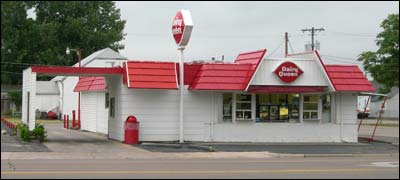
[July 21] This Dairy Queen -- maybe not with so many awnings -- has been on this corner across from Brit Spaugh Park in Great Bend for as long as I can remember. It was the hotspot of U.S. 281 north of Griff's A-frame. Nearly 40 years ago, when I was in the Argonne Rebels and we had all-day practices in the summer, I would wander over to either the Peter Pan, south of the park and now a sandwich shop (I think) or the Dairy Queen -- home of hard-fried burgers and brain-freezing cherry slushes. There ain't no better food for a 14-year-old. In 2005, I brought the boys (then 9 and 7) to Pawnee Rock. I purposefully avoided all Dairy Queens between Denver and Great Bend so I could get them ice cream and a drink at this place. They liked it, but it wasn't a religious experience. Maybe they needed to grow up on the plains to understand the deep feelings many of us have for DQ. It's a joint for polite families in larger towns and sometimes the only restaurant in smaller towns -- the kind of place where senior citizens nurse a coffee all morning and, at least before cellphones became so popular, where high schoolers gathered in the afternoon and evening. When I lived in Texas and drove across the rural areas, I hopscotched from one small-town DQ to the next. That's where the culture was. I think my first DQ ice cream cones came from the little store in Larned, where Mom took Cheryl and me after collecting our sunburned selves from the swimming pool. The Dairy Queen sold only cold treats, thanks to the very close presence of the Burg drive-in, but in the 1970s the main attraction for me was Lana the waitress, who I dated until she wised up. Three years ago, a Dairy Queen was opened in Anchorage. It had long lines for weeks as many of us sought a taste of back home and as the rest of the city tried to see what all the fuss was about. As far as I was concerned, however, the Dairy Queen was a failure. It was a new brick building, full of fancy fixtures and soothing lighting and high ceilings. The only connections it had to the DQs of home were the red sign and the high prices. I longed for a DQ in a modest building with a walk-up window, women with big hair, and the aroma of hard-fried burgers. The call of the wild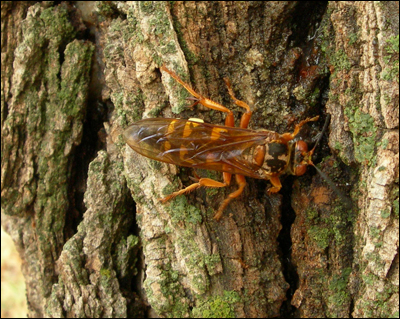
[July 21] On the plains where the deer and the antelope played with the bison, it's possible to see whitetails near the river, pronghorns on the open country on the way to Denver, and bison near McPherson and Hays and wherever a farmer gets it in his mind to honor the old days. Near the river and creeks, there are coyotes and turkeys. In catalpa groves, there's no shortage of crows. Clouds of smaller birds gather in the winter, and mockingbirds decorate the summer fenceposts next to redwing blackbirds on cattails. Still, the most numerous wild animals in our realm are the insects. In my younger days, I tended to overlook them unless one of them caught my eye and drew my unwanted attention. There are many roly-poly bugs that must have died of nausea from being rolled across our porch, and we should pause here to thank all the grasshoppers in Pawnee Rock that lost both their hind legs and mouthfuls of tobacco juice. There are the insects that I would like to forget. Bees, wasps, hornets, yellowjackets -- I know it makes a different to bug collectors which one is which, but I was stung by them all and am only now learning to live with them. Yes, they provide an important service to life on earth. Who else besides a bee would suck the last drops of Pepsi out of a can in the trash? Who else besides the hornet/wasp/yellowjacket would hang around elm trees and drink the sap while waiting for the occasional visitor to put his hand where it shouldn't fall. When that misfortunate event happens, well, that's when you'll hear the call of the wild. The wheel of time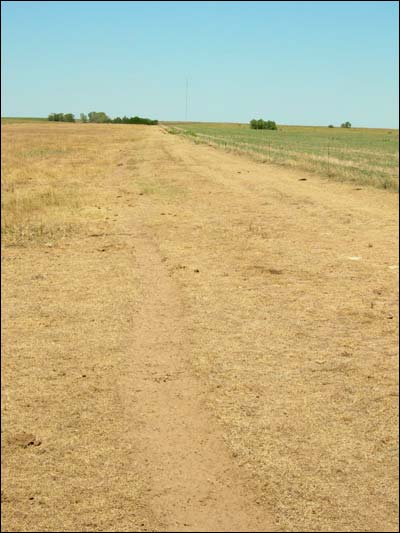
The world where I learned to drive: Now barely more than a trail. [July 21] I learned to drive on the quarter-mile-long driveway at my Unruh grandparents' farm. There were no ditches and no conceivable way I could have a wreck -- provided I stopped the Dodge Coronet before I ran into the mailbox at one end of the driveway or a shelterbelt at the other. From there, I moved on to the road to Pawnee Rock. Mom, who was my teacher, encouraged me to speed up past 30 mph even though I said I was trying to save gas. I imagine she was reasonably confident that I wouldn't ram into anything but she must have been bored silly by my hesitant driving. I drove very carefully. Later, I took my official driver's ed from Mr. Romeiser. I like to think that I paid my dues. This summer I've been training my own boys to drive -- and they're learning on a stick-shift Honda. I found a rarely used gravel road at the edge of town where the boys can't do too much damage to the transmission as they learn to feather the clutch and gas. It's a mile long and it's straight. Sam and Nik, of course, enjoy driving very much. They don't see 30 mph as an upper speed limit, and they caught on to N-1-2-3-4-5-R much faster than I picked up N-1-2-3-R. Even with that background, it has come as a pleasant surprise to see the younger boy, Nik, grow up (drivingly speaking) in a single evening. Nik, as you might remember from earlier postings, is a freckled 12-year-old dyed-in-the-T-shirt NASCAR fan. We've been to the short-track races six or eight times this summer, and last week Nik talked a guy who owns several Bandoleros to give him a chance to drive one during practice this week. Last night we took him to one of the racetracks, a quarter-mile paved oval in North Pole, a Larned-ish town southeast of Fairbanks. Two kinds of sporty cars -- kid-sized Bandoleros and adult-sized Legends -- are driven there. It's loud and the cars bump a lot at 40 and 50 mph.
The car's owner handed Nik a blue fire suit, helmet, and gloves. Another driver helped him get settled inside the roll-bar cage. Nik waited his turn, and off he went.
A Bandolero is powered by a 30-horsepower engine, like a go-kart might be. There's only one gear -- forward -- so all the finesse Nik learned in my Civic wasn't necessary. The honcho opened the gate and Nik roared onto the track. He circled the track slowly and then faster and spun out as he got used to driving around turns. He went out again later and spun out spectacularly, which earned him some encouragement from the car's owner. Nik went out two more times and did very well. We'll be sponsoring him when he starts competing later this year.
For me, the farm driveway was the beginning of my drive toward becoming an independent teenager. For Nik . . . let's just say that "drive" is the word of his life. Nik's a new guy today. He sees his goal, and he's got his foot on the gas. It's his world.
Around the corner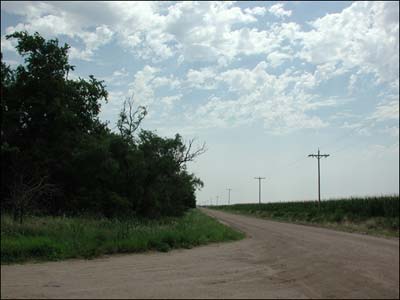
[July 20] Going around this corner at the southeast tip of Pawnee Rock meant slipping the bonds of our hometown. Once we were here, we were on the verge of becoming invisible to the town, and vice versa. The shelterbelt is a tough one, built with bois d'arc -- osage orange or hedge apples to you and me -- which may be the toughest wood in the state. In my time, it was home to rabbits and the usual songbirds. On this side of the road, we're in Barton County. On the far side, where the powerlines run, it's Pawnee County. Right down the middle is a dirt road often slathered with too much sand, but it's riverbottom land and everything on this side of town is sandy. Like good riverbottom land, it was unholy in its own lovely way. Among the haunted cottonwoods and frothy willows at the creek and river were gathering places where the young worked up romance if they were lucky and worked through a six-pack if they were still dreaming of it. Innocent boys fished. Along the river was where the poison ivy and marijuana grew, where if Pawnee Rock had outlaws they would have hidden out. It was the land of the round barn, sand-hill plums, and raccoons, and now it's the land of center-pivot irrigation. When we came back toward town, by foot or bike or car, the last moments passing the shelterbelt gave us a chance to compose ourselves. We put away our thoughts of fishing or kissing, and fellows smelling of Coors started chewing gum. I am proud to think that my generation was not the first to perform these rituals, and we will not be the last. The overlooked Rock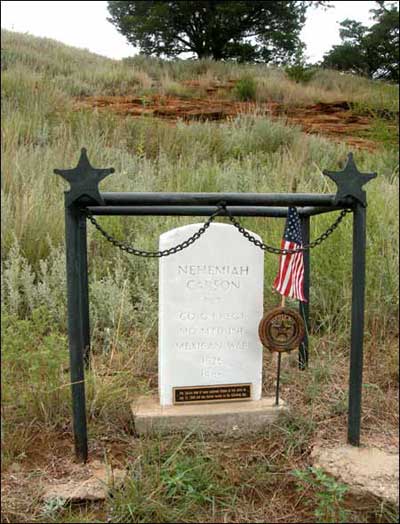
[July 19] It's the best known landmark in our part of the Santa Fe Trail, but sometimes little bits of our Pawnee Rock are overlooked in our insistence to focus on the grand view. Here are four things to look for on your next visit: 1. As you drive in, catch a glimpse of the marker placed to remember a U.S. soldier who died in 1846 while serving along the Santa Fe Trail during the Mexican-American War. Private Nehemiah Carson, a 20-year-old Missourian, was buried somewhere nearby and the stone was erected a few years ago.
2. Concrete steps and sidewalk lead from the east ditch to the top of the park. It was built about a century ago.
3. Atop the Rock stands a spire to commemorate the effort to turn the Rock into a park. One of the carvings on the spire is a coonskin-cap-wearing rifleman.
4. On the pavilion's top deck, someone carved crosshatches into the concrete as it was setting. Ed Durall and Bob Fry[July 15] Ed Durall, the Pawnee Rock graduate who generously sent us four midcentury Pawnee Rock High School yearbooks from his home in Florida, dropped by Emporia yesterday. Both he and Bob Fry, a long-ago Pawnee Rock graduate and music teacher, talked to Cheryl Unruh, who photographed them for her blog on FlyoverPeople.net. It's great to see these guys photographed in real life and not just in poses for now-faded yearbooks. They look like they know how to share a joke. Ever green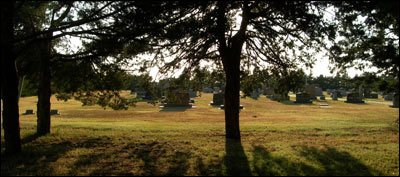
[July 15] A few years ago I stopped by Peace Lutheran Church north of Pawnee Rock to stretch my legs and because I hadn't been there since some ceremony in the distant past. The steeple seemed just as tall and pointed, but the architecture was more fascinating than it had been in the 1970s -- or maybe I was better educated this time. It was a leisurely August evening, so I strolled around the grounds and tried not to attract attention. The graveyard beckoned, and I wandered among the Tammens and Bartels and some other folks with names just as Kraut as mine. The grass crunched underfoot, and the air was as dry as the grass.
I used to drink a bit of gin in the days after I graduated from college as a brand-new sophisticated adult and went to work in humid central Texas. I would never have admitted being homesick, but the aroma of juniper berries in the drink brought back the feel of summer evenings in Kansas. And so, during my visit to Peace Lutheran Church, I was home again. It could have been any church and graveyard in the area; there's a time of day when they're all as gentle as a mourning dove. It's a happy memory, the promenade among the cedars.
The way tags used to be[July 14] Doyle Mayse of the Pawnee County Sheriff's Office also spent some time with counties and county seats. (For a refresher: county abbreviations.) Here's what he wrote: I enjoyed your article about Kansas Counties. I wonder how many people could list them and know where they are. I used to know they all by heart when I was a dispatcher, knew the county seat and knew the law enforcement codes to send them messages. Do you remember when each county had their abbreviation on the tag like PN, BT, that way you knew where they were from. And by the letter like M or V, you knew their last name started with. You could actually remember your license tags back then, basically all you had to remember was the number. I miss that on the tags now. XYZ-123 doesn't mean anything. Each county also had a number which started with 0 or 1 and went down the line alphabetically. Sometimes it was used as the first number in radio numbers, most of the time it was ignored. It's almost 100 out today, glad for air conditioning. Send us some ice. I write like I'm famous[July 14] Being a public writer requires a certain amount of ego, but it never hurts to receive recognition for my work. I found an easy way to get it, thanks to a friend's link on Facebook. The site is I Write Like -- iwl.me. You find a sample of your writing and paste it into a blank on the IWL form, then submit it. In a few seconds, the site tells you who your writing reminds it of. I suppose it takes into account vocabulary, sentence length, and the number of syllables per word. I submitted several paragraphs I wrote yesterday, Counting Down the Counties, and a few more of the July 7 piece, The Game Changes. IWL said I wrote like Stephen King and, on the second piece, like Mark Twain. Flatter me more! Out of curiosity, I also submitted a few paragraphs writted by Steve Damm, who had e-mailed us about his Pawnee Rock ancestors. IWL's judgment is that he has a lot in common with Arthur Conan Doyle, the creator of Sherlock Holmes. Want to be a good writer? Come to Pawnee Rock. Counting down the counties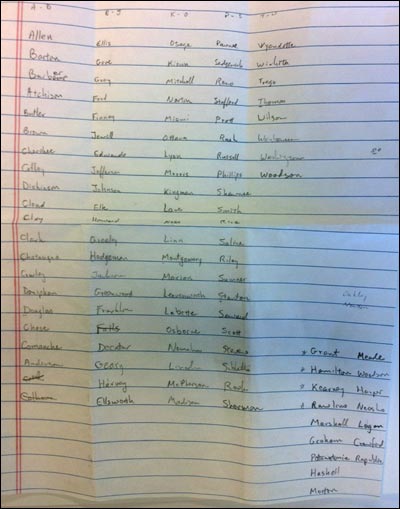
[July 13] Once upon a time, I was one with Kansas' 105 counties and county seats. Like all sixth graders in Mrs. Latas' class, I could list them by congressional district and by the whole state, and I was, to be modest, brilliant at it. Over the years I've toyed at remembering them, sometimes sparring with sister Cheryl to see who could present a county the other one couldn't answer with a seat. I continue to play license-tag games when I'm on the highway. Do kids still learn the counties? My cynical guess is that with the state's rural population moving to the big cities, there's less and less interest among kids and teachers in learning what's beyond the borders of, say, Sedgwick or Reno county. I think it's fairly certain that smaller numbers of kids will wander far outside their home counties unless they're going to another big city. (See the Unruh Theory of Hometown Relativity.) Among parents, that might explain why they allowed the state to play down the proud two-letter county identifier on the tags. That's a shame. The very idea of some towns -- WaKeeney comes to mind -- might never be raised east of Russell unless someone notices "TR" on a tag. Yesterday at lunch, I sat at a picnic table and tested my own geographic memory. I made a row of labels (A-D, E-J, and so forth) across the top of a legal pad to help me keep things straight. Then I listed all the counties I could think of. Allen, Barton, Comanche, and on and on. I reached 60 or so and the end of my burrito, so I went for a stroll among the birches. Another two dozen names came to me -- including three desperate oddities -- Falls, Creek, and Calhoun -- that had to be struck. Among the counties I couldn't bring to mind are four of the five that I think I've never been to. On my next visit to Kansas, my goal will be to spend a little time in each of those counties: Rawlins, Grant, Kearny, Hamilton, and Stanton. In the end, the list probably reveals the state of my mind. How should I rate my accomplishment -- sad that I forgot 16 counties, or proud that I remembered 89?
Parade scheduled for August 7[July 12] Mark your calendars -- Saturday, August 7 -- for a day of entertainment in Pawnee Rock. Janice Schmidt wrote to let us know about:
The headquarters for this activity will be the depot downtown on Centre Street, which is where the parade will take place. Janice said the parade likely will run north to south. Janice says several tractors, a horse, and maybe a Model T have been signed up for the parade -- and there is still plenty of time for more participants to join. Happy 50th anniversary[July 12] Do you remember Don and Ruby Popp? In the 1960s-1980s, they lived in the old two-story Zieber place on Pawnee Avenue a block and a half west of the post office and had four kids -- Glenda, Greg, DeWayne, and Donitta. The couple, who now live in Hoisington, celebrated their 50th anniversary on June 1. (July 4 notice in Tribune) Radium Bridge really needs work[July 9] Now that the inspectors with their ultrasound equipment have tested the timbre of the Radium Bridge over the Arkansas River, they've decided to close it down. Apparently some of the 2-inch-thick pins that hold the concrete structure together have broken and the bridge could have tumbled into the wet sand under the next heavy load. (Tribune story) The current Pawnee Rock Bridge, another concrete bridge, is not built the same way as the Radium Bridge, according to the story in the Tribune. The situation, however, brings to mind the previous PR bridge, which was a spotty layer of asphalt atop a wooden deck held up by pilings (like telephone poles) bolstered by boards in an X shape. One of the joys of childhood was sitting under the bridge when traffic passed overhead and a shower of gravel rained down. That was in the 1970s. The wooden Pawnee Rock Bridge was replaced in 2000.
Pawnee Rock Bridge, early 1970s. Radium Bridge needs work[July 8] The Radium Bridge over the Arkansas River is getting temporary support from railroad ties. The Tribune's Chuck Smith has the story. Seeking information on Damms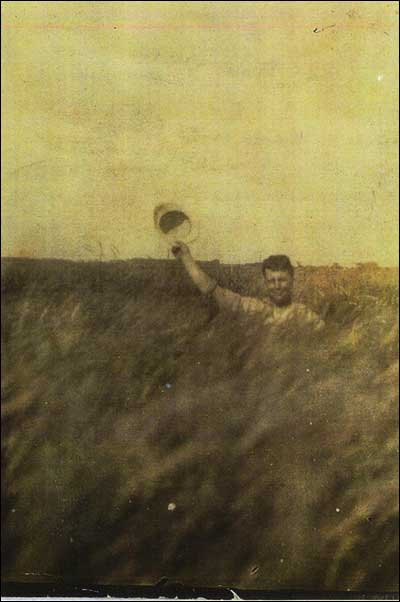
Ed Damm, Steve Damm's grandfather, was photographed in a wheat field. He and his wife, Rosalia, moved from Pawnee Rock to Chillicothe, Missouri. [July 8] Steve Damm of Lake Saint Louis, Missouri, wrote to mention that he had found his grandfather's name in the list of Pawnee Rock's Kansas State Guard members posted here in June. He sent along a photo of Ed, as well as a farmhouse that he thinks might have belonged to his great-grandparents, Peter P. and Ellen Damm. His great-grandparents moved to Missouri in 1901. I don't have a photo to confirm that this is the house that sat on that property, but perhaps someone with a bit more experience will remember it. If you knew any Damms in town, please pass your knowledge along. Steve would greatly appreciate it. Steve wrote: I finally made the trip to the Pawnee Rock area for the first time last December. I spent the first couple days gathering information from the Barton County courthouse probate and land records, library, cemeteries, and historical society. The last couple days were spent connecting with the people (including distant relatives that I had never met before) and photographing sites where my ancestors once lived, worked, and prayed. I found out that it was my great-great grandfather, Peter A. Damm, and Family who moved to the Pawnee Rock area in 1875. Meanwhile, another great-grandfather of mine, Thomas Tyrrell, and Family settled a couple miles North of PR in 1878. PAD's son, Peter P., married TT's daughter, Ellen, in 1881. PP and Ellen had (5) children including my grandfather, Edward. Walking the pasture land that my family once owned (section 2 of River Township) was probably the most memorable part of my trip. An aged windmill and oil derrick still remain on the property. I also drove past the farm land where Peter P. and Ellen Damm's house probably once stood (the East half of section 4 of River township) directly southeast of town. Sadly, there was no longer a home on that section of land. I was really hoping to confirm that the photo I had of their house is the same one that is indicated on section 4 of the map.
Here's a detail of the 1916 plat of River Township. The Damms had a farm in section 4, just southeast of Pawnee Rock, and also owned land on the other side of the Arkansas River in section 2. The game changes[July 7] As a Pawnee Rock kid who should have been sleeping, I often lay in bed and listened to the Royals on my radio, which was turned down to the point where my parents couldn't hear it. I dreamed of one day going to a game and maybe even catching a foul ball. I think the desire to snag a ball in the seats is part of any American kid's natural-born makeup. Tuesday night when I should have been asleep I was watching the televised baseball game between KC and the Mariners in Seattle. In the eighth inning, a Mariners batter whacked a ball just inside first base, and it rolled into foul territory and eventually reached the stands. A young man, maybe 17, reached down and corraled the trophy even as his dad tried to stop him. Until the boy touched the ball, it was in play and the Mariners probably would have scored another run and tied the game while the Royals chased down the ball. It's possible that the boy's efforts cost the Mariners the game. Once his dad explained, the boy dropped the ball back onto the field. A player or ball girl tried to hand it back to him as the catcalls fell on his ears, but what boy would want such a tainted souvenir? Poor kid. Guards escorted him out of the stadium, maybe for his own good. Maybe it's a stadium rule that anyone who messes with the game has to leave. Still, put yourself in the boy's shoes. He'll be hounded in school and on the street. His photo will be in the paper and across the Internet, and the soulless bloodsuckers of talk radio will roast him for breakfast. He will never want to go to another Mariners game. His family will learn to never speak of The Game. The event will weigh on him for the rest of his life, and I hope he learns to laugh at it. How often have any of us grabbed something with honest enthusiasm only to have it turn to nightsoil in our hands? It happens. The wrong job, the weeds that held barbed wire, the kiss . . . I'm glad the Royals won, but I wish it hadn't been at the self-inflicted expense of a young Mariners fan. Forty years ago, I wouldn't have lost any sleep over the result, but for a dad with two sons it's now a different game. Why summer smells good
[July 6] It's a busy month horticulturally in Jim Dye's yard. He sent photos this weekend of lilies, honeysuckle, and a beautiful flower that blooms explosively and only for a moment once a year. Pawnee Rock is heading for the dog days -- those late afternoons when it's so hot the only things a civilized person can do is perch in the recliner and let television wash over you or head for the workshop and listen to the Royals on the radio. Out in the yard, however, life doesn't stop just because it's annoyingly warm for us. Assuming we keep the sprinklers going, the flowers grow and attract bees and make baby flowers. In the ditches and fields, sunflowers are coming into their own and sand hill plums are getting ready. The old East Coasters may have called central Kansas the Great American Desert, but it's full of life all through the oven season. Fourth of July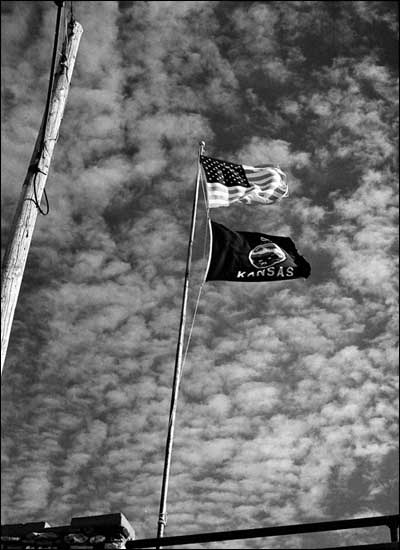
U.S. and Kansas flags atop Pawnee Rock State Park, 1974. [July 4] Here we are again, gathered this time for the 234th anniversary of our country's independence. It seems like only yesterday that we collected ourselves in Larned to watch watermelon spitters, concerts, and fireworks marking the bicentennial. I hope that today, in the privacy of your mind, you'll think about what our independence means and how much work we have ahead of us if we are to be as free as we like to think we are. That's our patriotic duty, but it's heavy stuff for a summertime holiday. Maybe we should quickly thank those who created the country and those (including ourselves) who built it over the decades. Then let's celebrate, which is what I'm sure our ancestors did themselves as soon as they were in the country long enough to learn its customs. Of course, you don't have to celebrate. That, too, is your right. I'm going to celebrate by making sparkler-hot chili, trimming some willows, and working on a book. Sometime during the afternoon, I'll take my biggest kitchen knife and whack open a watermelon. To be honest, I'd just as soon spend the day shooting firecrackers and bottle rockets. For those whose plans include doing that, let me say: Don't blow your fingers off. Early history of Pawnee Rock
Pawnee Rock in 1876 on Santa Fe Trail. [July 2] The Biographical History of Barton County, Kansas," has been a treasure for historians and those who attempt to make sense of history, such as I. Here is the book's description in 1912 of the early history of Pawnee Rock. The photos came from PawneeRock.org readers, and all have appeared earlier except for the Inman book, a copy of which I recently came across. Here are the details of our hometown, as written by a booster of the county whose goal was to sell books. Nevertheless, I'm glad to have it as a resource: Pawnee RockFourteen miles southwest of Great Bend, in one of the richest agricultural sections of Barton County is the town of Pawnee Rock. It derives its name from the historic cliff of sand-stone that for countless ages has stood a silent sentinel of the plains, just north of what is now the townsite. It was a stopping place for the hardy men and women who came from their eastern homes to find wealth and fortune in the boundless west, and the entire length of the Santa Fe Trail, noted for its historic points of interest affords no spot that has woven around it more real history of the early days than this old pile of rock. 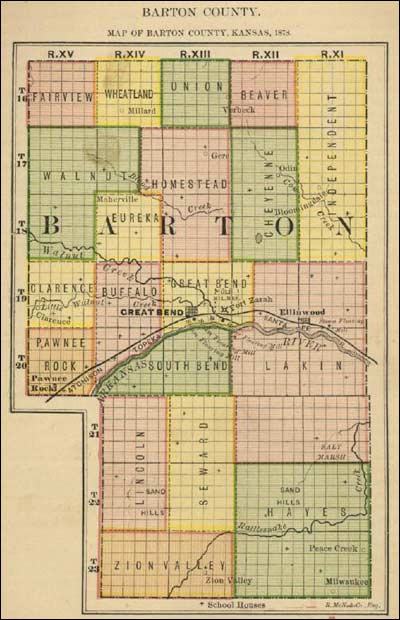
Barton County, 1878 Before the advent of the white man it marked a way for the Indians in their periodical migrations from what is now Southern Kansas to the valley of the Platte river in Nebraska. For years and years Pawnee Rock was a point at which the Comanche, Kiowa, Arapahe and Cheyenne Indians held their councils of war and peace. Within the shadow of Pawnee Rock many famous Indian battles were fought, battles that never found a place in United States history, but were described to the early white settlers, by descendants of the noble warriors of the plains who took part in them. Countless bones have been dug out of the soil adjacent to the Rock, and they bear witness to the bloody history that was made before civilization claimed it for the abode of the white man.
Rock Hotel and the mill, 1880s. The first building to be erected on the site in this part of the Great American Desert, of the town of Pawnee Rock was the Rock Hotel which still stands today and has been the stopping place of hundreds of old timers who came to this part of the country in the early days, and it has housed some famous men and women since it was built in 1874. The town grew in population and area, slowly at first but in 1887 the progressive citizens of the town began the work that resulted in the town being incorporated. The first set of officers were elected April 1, 1887. Previous to the election a rather exciting campaign was carried on by the two opposing factions, the main issue being pool rooms, and whether or not they should continue in the town. There were two tickets in the field and after the votes had been counted it was found that a part of each ticket had been elected and the first council of Pawnee Rock was composed of the following gentlemen, all of them men who had an interest in the town and stood for progress and growth: William Bunting, mayor; L K. Benefield, John Hepler, William McDougal, W. H. Bowman and William Walton, councilmen. At one of the first meetings of the council the following city officers were named and sworn in to serve: J. D. Welch, city clerk; J. W. Ratcliff, city attorney; Alvin Iles, city marshal; Earnest Smith, city treasurer. This administration laid the foundation for the building of one of the most important small towns on the main line of the A. T. & S. F. Railroad. The first elevator in the town was built in the year 1878 by W. H. Bowman, Aaron Garvick and Eli Bowman. They also built a flour mill and operated it until 1899 when it was purchased from them and moved to Garfield, near Larned. The year 1878 was a good one for the town, many new buildings having been erected, some of them fine residences.
Pawnee Rock about the time the "Biographical History" was produced (1912). At this writing Pawnee Rock has three general stores, two banks, two furniture stores, two hardware stores, five elevators, a fine electric light and ice plant, owned and operated by home people, three churches, Christian, Methodist, New Jeruselein, fine public schools and everything and more than is found in many towns of twice its population. The present officers of Pawnee Rock are: John Bowman, mayor; A. S. Gross, clerk; R. G. McDougal, E. L. Robinson, W. C. Lamb and Grant Lippincott, councilmen. Pawnee Rock contains some of the nicest and most modern residences in Barton County. It is a supply point for a large territory in Barton, Pawnee and Stafford counties and as a shipping point for grain, cattle and other live stock it ranks well up among the best in this part of the state.
"If this sentinel of the plains might speak, what a story it could tell of the events that have happened on the beautiful prairie stretching out for miles at its feet. All over its scarred and weatherbeaten front, carved in quaint and rude letters, are the names of hundreds who in early days made the dangerous and exciting passage of the Santa Fe Trail. Some names are roughly chiseled there, too, who were not ambitious at the time of more enduring fame, and gave no further thought of their effort than was concentrated in the bare idea of relief from the ennui of the moment, while their horses and mules were resting, but who will go down to history cursed or praised -- as viewed from varying aspects -- long after the storm of centuries shall have obliterated ever mark of this isolated mass of sandstone. Conspicuous among these is that of Robert E. Lee, the famous leader of the Confederate armies, who, in 1843, crossed into the borders of Mexico as an officer of the Mounted Rifles. Under the shadow of Pawnee Rock, perhaps Coronado, the celebrated Spanish explorer, and his little band of faithful followers rested on their lonely march in search of the mythical Quivira. The Rock alone is all that remains, in all probability, upon which the Spaniards looked, for the mighty interval of nearly four hundred years relegated all else -- trees, water courses and the entire landscape, that the hardy adventurers looked upon, to the domination of vast modification—and this iron-bound hill -- whose unsuceptibility to change is almost as the earth itself -- the only witness of their famous march. "During the half century included between the years 1823-73 -- which latter date marked the advent of the railroad in this portion of Kansas -- Pawnee Rock was considered the most dangerous place on the central plains for encounters with the Indians, as at this particular point on the Trail the Pawnees, Kiowas, Comanches, Arrapahoes and Cheyennes made their not infrequent successful raids upon the pack and wagon trains of the freighters across the continent. I well remember, in the earlier geographies, that most exciting and sensational of all the illustrations -- to my boyish mind at least -- which depicted the Santa Fe traders attacked by Indians, but that was long ago, and such scenes have passed away forever. "In those primitive days of the border, Kit Carson, Lucien B. Maxwell, John Smith, the Bents and the Boones, with other frontiersmen, commenced their eventful lives in the far West -- mere boys then -- but whose exploits have since made for them a world-wide reputation. Kit Carson, Maxwell, Smith and Bents are all dead with the harnes on, and on the confines of the civilization which is rapidly closing up the gap at the foot of the mountains, amidst which there would have been nothing congenial -- so they passed away while there still remained fresh prairies and quiet streams. "Kit, one of the most noble men it has been my fortune to know, is sleeping peacefully under the gnarled old Cottonwoods at Fort Lyon, on the Arkansas that river he loved so well -- every foot of whose silent margin could tell a story of his daring. It was at Pawnee Rock many, many years ago, that Kit, then a mere boy, had his first experience with the Indians, and it was because of this fight that the Rock received its name. "In those days the Pawnees were the most formidable tribe on the eastern plains, and the freighters and trappers rarely escaped a skirmish with them either at the crossing of the Walnut, Pawnee Fork, or at Little or Big Coon creeks. Today the historic hill looks down only upon peaceful homes and fruitful fields where for hundreds of years it could tell of nothing but death; where almost every yard of the brown sod at its base covered a grave; where there was nothing but shadow, now all is sunlight. In place of the horrid yell of the savage, as he wrenched the reeking scalp from his vanquished victim, the whistle of the locomotive and the pleasing whirr of the reaping machine is heard; where the death cry of the painted warrior rang mournfully over the silent prairie, the waving grain is singing in beautiful rhythm as it blows to the summer breeze. Almost every day in the opening spring, or before the grain planting in the early fall for several years during the first settlement of the country in the vicinity of Pawnee Rock, the skeletons of those killed there in the long years gone by sometimes the bones of the white man, sometimes the bones of the red man were plowed up; and even now where new fields are opened, the Rock thus gradually unfolds the sphinx-like secrets of its dead." 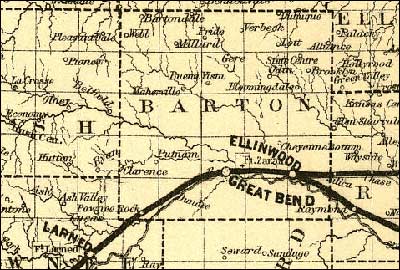
Barton County, 1886. Note that the bottom of the county has been squared off and Stafford County created. Bringing the water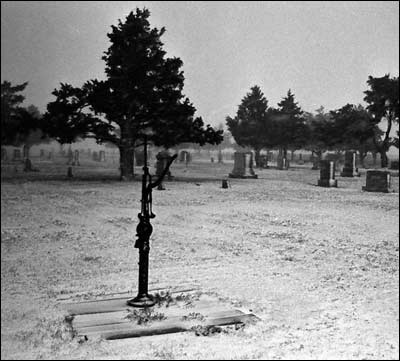
Hand water pump in the Pawnee Rock Cemetery, around 1974. [July 1] Yesterday my sister, Cheryl, posted a couple of recent photos of the Pawnee Rock Cemetery's water pump. It's rusted and the handle is gone. The photos made me remember my own tests of strength, weight, and determination with the pump. Unlike the pump in front of the lumberyard, this one didn't get much action and it probably had to draw water up an additional 50 or 60 feet. But every spring and summer, it would creak and shriek because families would need water either to get their flowers to grow or to keep them from drying up so quickly in the wind. Some of the oldtimers would fill a galvanized gallon bucket and carry the water to the decorations on their spouse's, or parents', or child's grave. By bringing water, the pump brought life. It brought me back to life a number of times on hot afternoons when I was clipping grass and mowing. I'm saddened by the loss of the pump. I don't know when it stopped being used, or when the pump's handle went away. These things happen. The pump is a symbol of hope in a place where we commemorate life. By bringing water, it staves off the everlasting desert. Maybe the folks of Pawnee Rock bring jugs of water to the cemetery now, or maybe the trend is so strong toward artificial and cut flowers that nothing needs to be watered anymore. Maybe the folks who would enjoy a good stand of peonies are now under them and few people have an interest in public gardening that takes an effort. The pump is a part of our community's history, going back to the days when folks had to earn their water. It's part of the hilltop biosphere, along with the low-lying cactuses and cedars and blue racers. I wonder whether there's feeling that the pump should be replaced. I'd throw in a few dollars to help it happen. |
Sell itAdvertise here to an audience that's already interested in Pawnee Rock: Or tell someone happy birthday. Advertise on PawneeRock.org. |
|
|
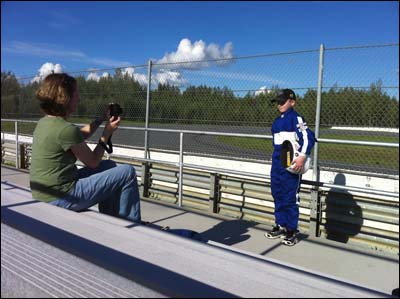
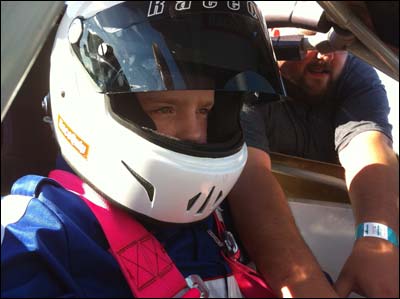
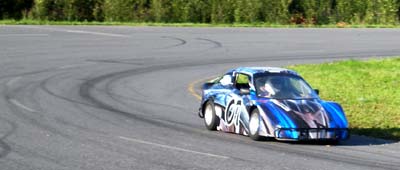
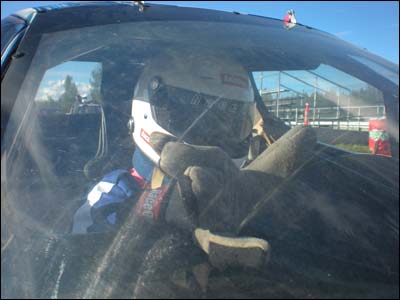
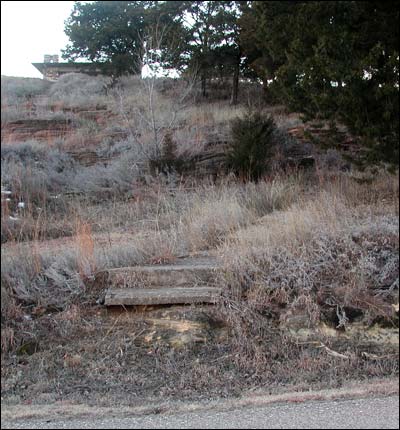
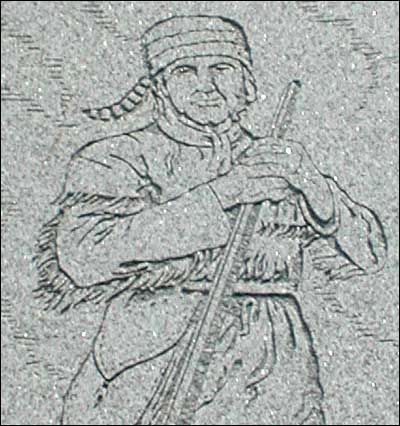
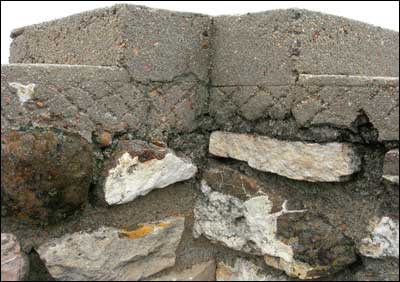
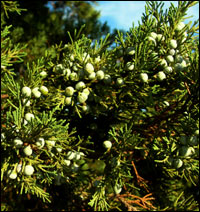 And still the air was muscular enough to carry the scent of the cedars, the branch of the juniper genus that we've put in all our cemeteries as a symbol of everlasting life and as a bulwark against the winter wind. During my visit, the trees' berries filled the space between the needles.
And still the air was muscular enough to carry the scent of the cedars, the branch of the juniper genus that we've put in all our cemeteries as a symbol of everlasting life and as a bulwark against the winter wind. During my visit, the trees' berries filled the space between the needles.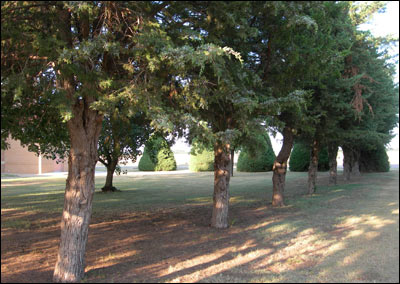

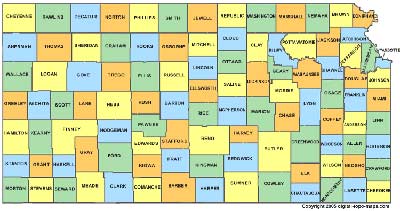
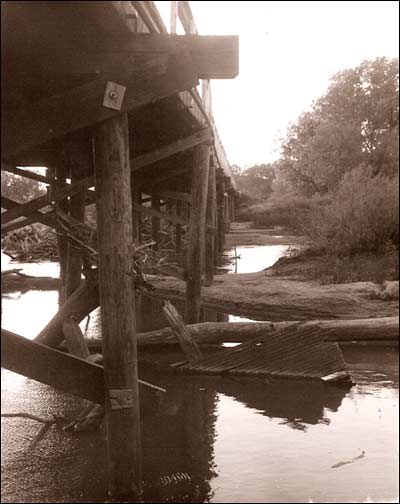
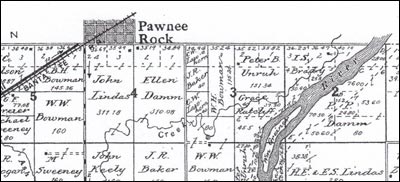
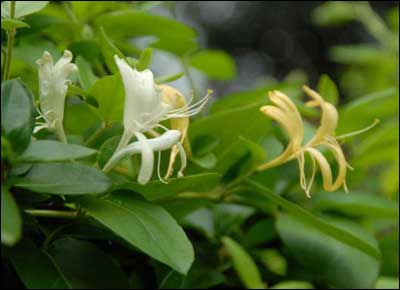
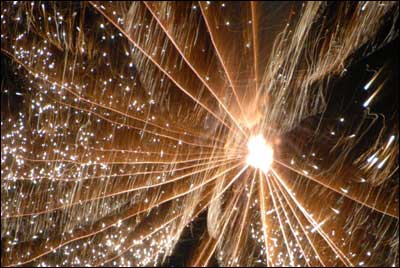
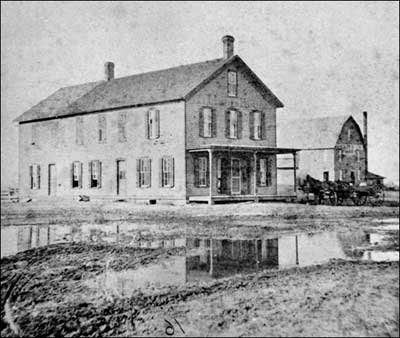

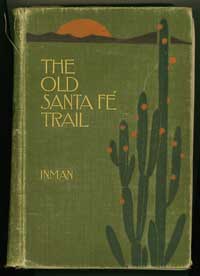 From Inman's Tales of the Trail:
From Inman's Tales of the Trail: